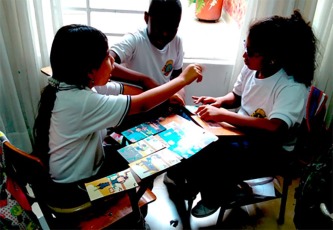Elsevier, Journal of Hepatology, Volume 70, May 2019
Background & Aims: To date, evidence on the association between physical activity and risk of hepatobiliary cancers has been inconclusive. We examined this association in the European Prospective Investigation into Cancer and Nutrition cohort (EPIC). Methods: We identified 275 hepatocellular carcinoma (HCC) cases, 93 intrahepatic bile duct cancers (IHBCs), and 164 non-gallbladder extrahepatic bile duct cancers (NGBCs) among 467,336 EPIC participants (median follow-up 14.9 years).
Elsevier, TrAC - Trends in Analytical Chemistry, Volume 114, May 2019
The presence of small plastic particles in the environment, reported for the first time in the 1970's, has only recently been recognized as a global issue. Although environmental awareness continues to grow, so does its consumption and associated risks. The number of studies reporting the presence of microplastics, has grown exponentially as did the concern over plastic degradation into smaller particles like nanoplastics, a potentially more pernicious form of plastic pollution.
Elsevier, Renewable and Sustainable Energy Reviews, Volume 105, May 2019
The Sustainable Development Goals and the Paris Agreement, as the two biggest climate action initiatives, address the need to shift towards a fully sustainable energy system. The deployment of renewable energy, especially solar and wind power, decreases carbon dioxide emissions, but presents issues of resource intermittency. In this study, a cost-optimised 100% renewable energy based system is analysed and quantified for the Americas for the reference year 2030 using high spatially and temporally resolved weather data.
Elsevier, International Journal of Hygiene and Environmental Health, Volume 222, May 2019
This study quantified antibiotic and antibiotic resistance gene (ARG) concentrations in hospital and communal wastewaters as well as the influents and effluents of the receiving urban wastewater treatment plants (UWWTP) in two Dutch cities. In only one city, hospital wastewater was treated on-site using advanced technologies, including membrane bioreactor treatment (MBR), ozonation, granulated activated carbon (GAC) and UV-treatment.
Elsevier, Telematics and Informatics, Volume 38, May 2019
Currently, learning technologies are transforming and modifying educational systems with impressive progress of Information and Communication Technologies. Furthermore, when these technologies are available, accessible, usable and affordable, they represent more than just a transformation for people with disabilities, they represent real opportunities with access to an inclusive education and help to overcome the obstacles they meet in classical educational systems.
Elsevier, Research Policy, Volume 48, May 2019
To what extent is scientific research related to societal needs? To answer this crucial question systematically we need to contrast indicators of research priorities with indicators of societal needs. We focus on rice research and technology between 1983 and 2012. We combine quantitative methods that allow investigation of the relation between ‘revealed’ research priorities and ‘revealed’ societal demands, measured respectively by research output (publications) and national accounts of rice use and farmers’ and consumers’ rice-related needs.
Elsevier, Energy, Volume 175, 15 May 2019
This article shows that research in the design of 100% renewable energy systems in scientific articles is fairly new but has gained increasing attention in recent years. In total, 180 articles published since 2004 have been identified and analysed. Many of these articles have a predominant focus on the electricity sector. However, an increasing number of studies apply a cross-sectoral holistic approach on the entire energy system.
Elsevier, Progress in Disaster Science, Volume 1, May 2019
This viewpoint reviews key assessments from the IPCC Special Report on Global Warming of 1.5 °C and examines the implications for the Sendai Framework for Disaster Risk Reduction (SFDRR). Disaster risks are expected to be higher at 1.5 °C and continue to increase at 2 °C. Current and future disaster risk management particularly those that deal with the impacts of coastal flooding, heat-related health impacts, sea level rise, and forest fires are to be strengthened, particularly the Arctic, Caribbean, SIDS and low-lying coastal areas are particularly at risk.
Elsevier, Progress in Disaster Science, Volume 1, May 2019
The UN has adopted the Sendai Framework for Disaster Risk Reduction (2015–2030; SFDRR) in March 2015 and the member countries agreed to shift from disaster management to disaster risk management. The SFDRR is in line with the UN Sustainable Development Goals (SDGs; September 2015). In 2016, the UNISDR together with partner organizations has prepared roadmap for mainstreaming Science and Technology in SFDRR. Out of four priority areas, this paper focuses on the appraisal of challenges in SFDRR priority 1 “understanding disaster risk” through the lens of science, technology and innovations.
Elsevier, Neuron, Volume 102, 22 May 2019
Healthy psychological and brain development is not a privilege, but a fundamental right that requires special protections and opportunities for building cognitive, emotional, and social skills necessary for becoming a contributing member of our society. Healthy psychological and brain development is not a privilege, but a fundamental right that requires special protections and opportunities for building cognitive, emotional, and social skills necessary for becoming a contributing member of our society.

